Neuroscience
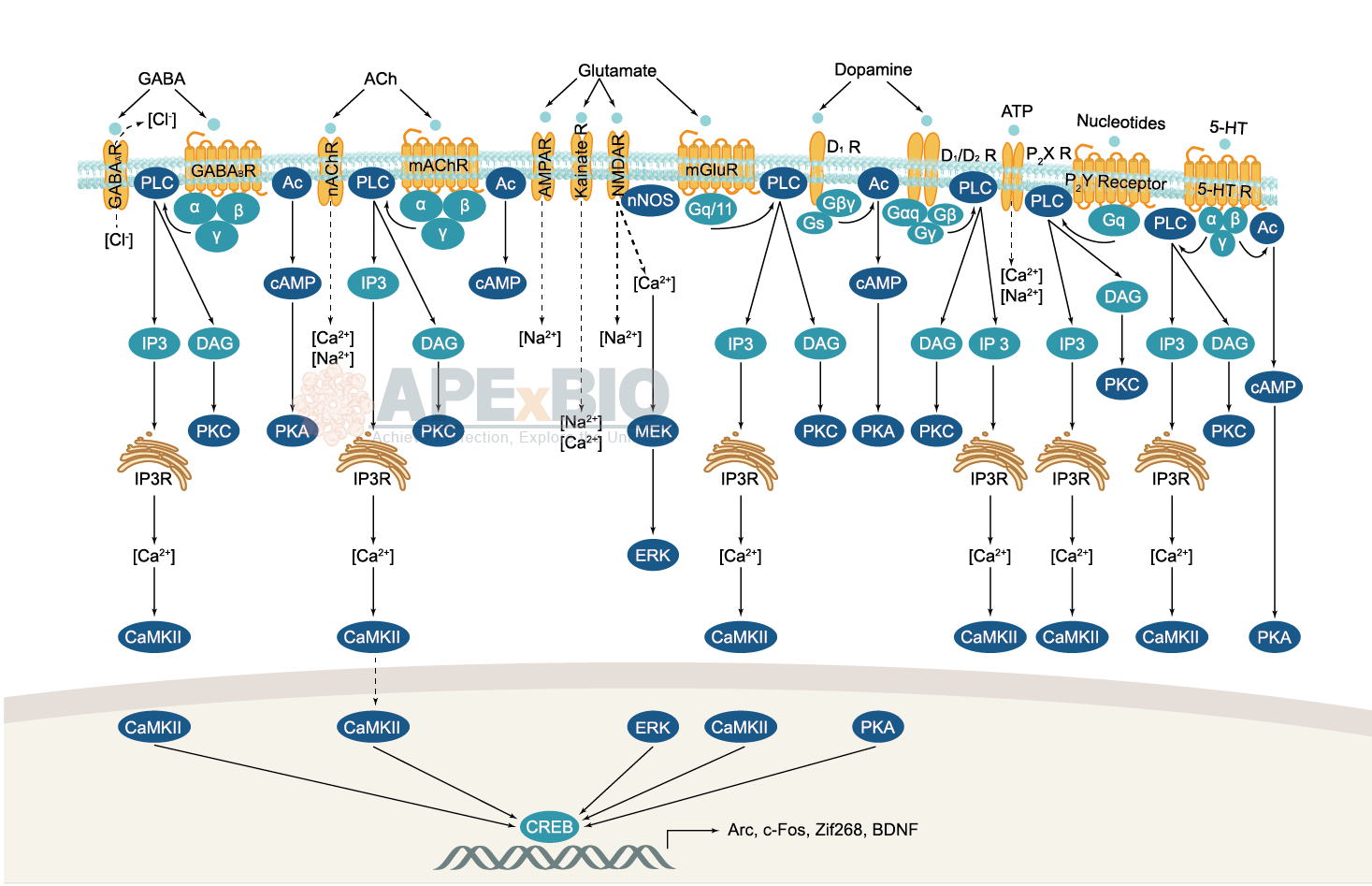
Neurotransmitter receptors function via various G-protein coupled and G-protein independent mechanisms that activate downstream intracellular signaling pathways such as cAMP/PKA, PI3K/AKT, phospholipase A2, and phospholipase C pathways. For instance, dopamine receptors act through adenylate cyclase to activate PKA and other signaling molecules, thereby mediate gene expression through the actions of CREB and other transcription factors. Other neurotransmitters such as NMDAR or AMPAR are associated with ion channels that control flux of Ca2+ and Na+, thus propagating the action potential across the post-synaptic neuron.
Dysfunctions in GABAergic/glutamatergic/serotonergic/dopaminergic pathways result in a broad range of neurological disorders such as chronic pain, neurodegenerative diseases, and insomnia, as well as mental disorders including schizophrenia, bipolar disorder, depression, and addiction.
-
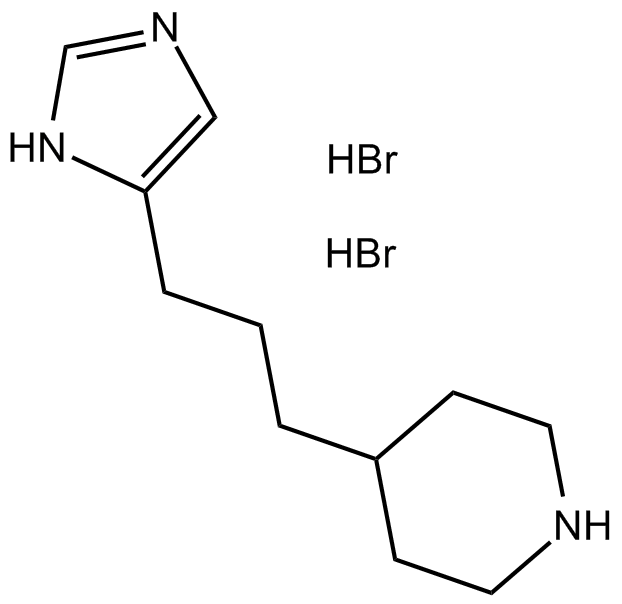 B7076 VUF 5681 dihydrobromideSummary: histamine H3 receptor silent antagonist
B7076 VUF 5681 dihydrobromideSummary: histamine H3 receptor silent antagonist -
 B7077 VUF 8430 dihydrobromideSummary: histamine H4 receptor full agonist
B7077 VUF 8430 dihydrobromideSummary: histamine H4 receptor full agonist -
 B7089 TC 1698 dihydrochlorideSummary: nicotinic α7 receptor agonist
B7089 TC 1698 dihydrochlorideSummary: nicotinic α7 receptor agonist -
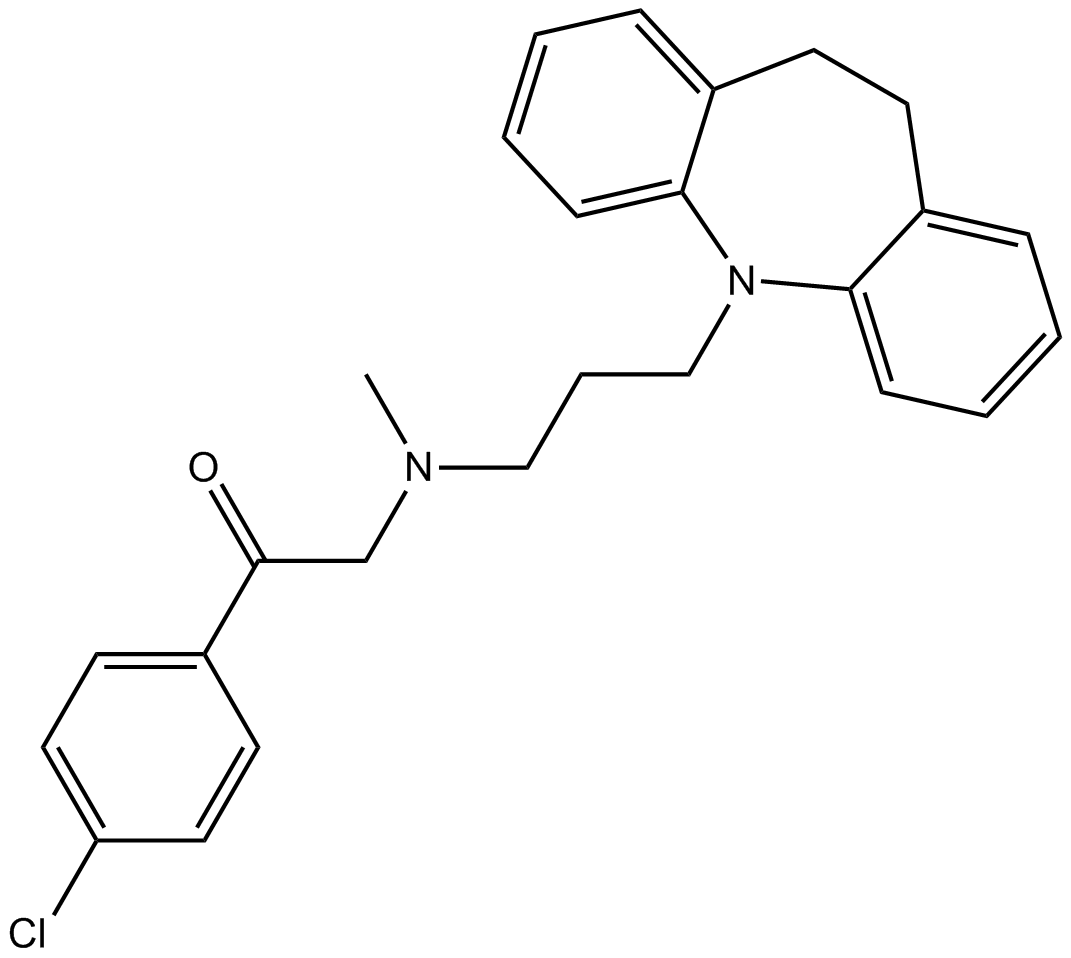 B7097 LofepramineSummary: Serotonin and noradrenalin re-uptake inhibitor (SNRI)
B7097 LofepramineSummary: Serotonin and noradrenalin re-uptake inhibitor (SNRI) -
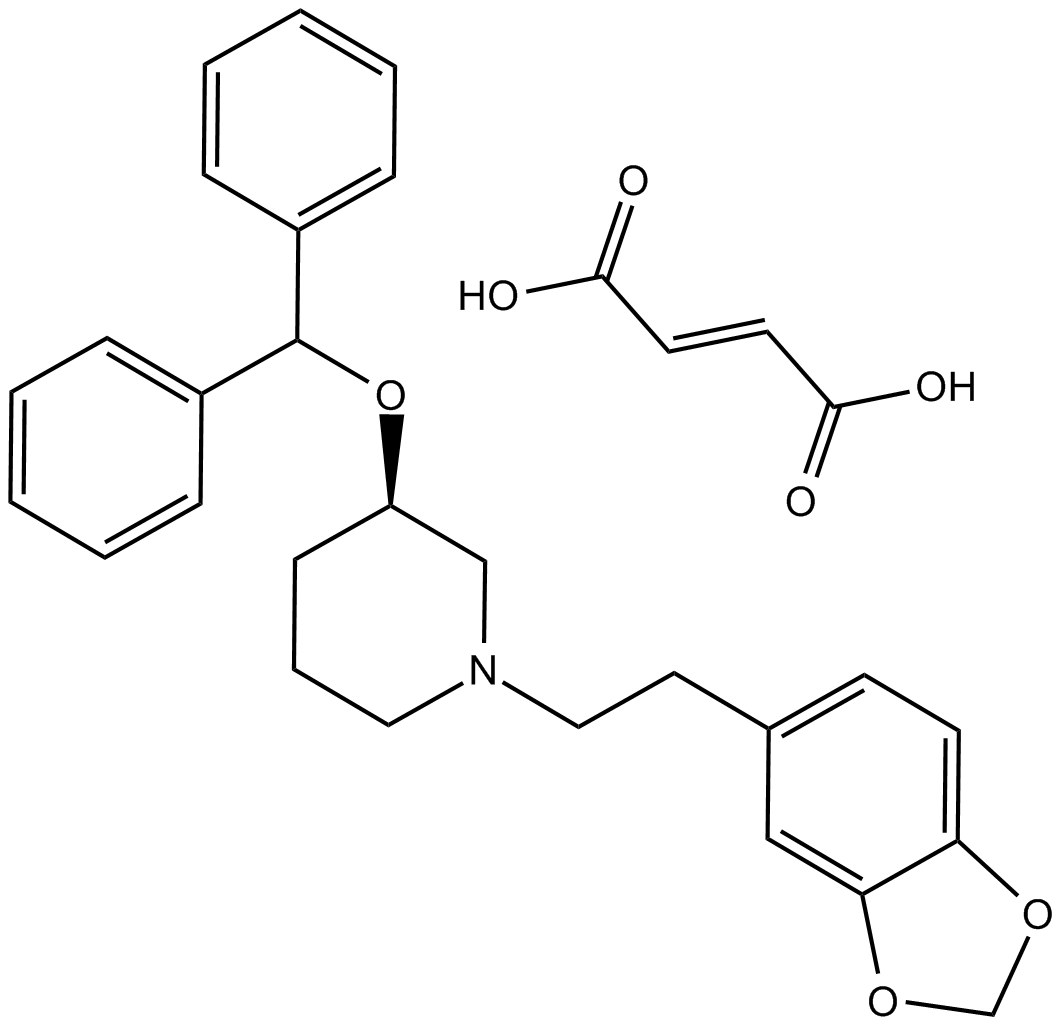 B7114 Zamifenacin fumarateSummary: M3 muscarinic receptor antagonist
B7114 Zamifenacin fumarateSummary: M3 muscarinic receptor antagonist -
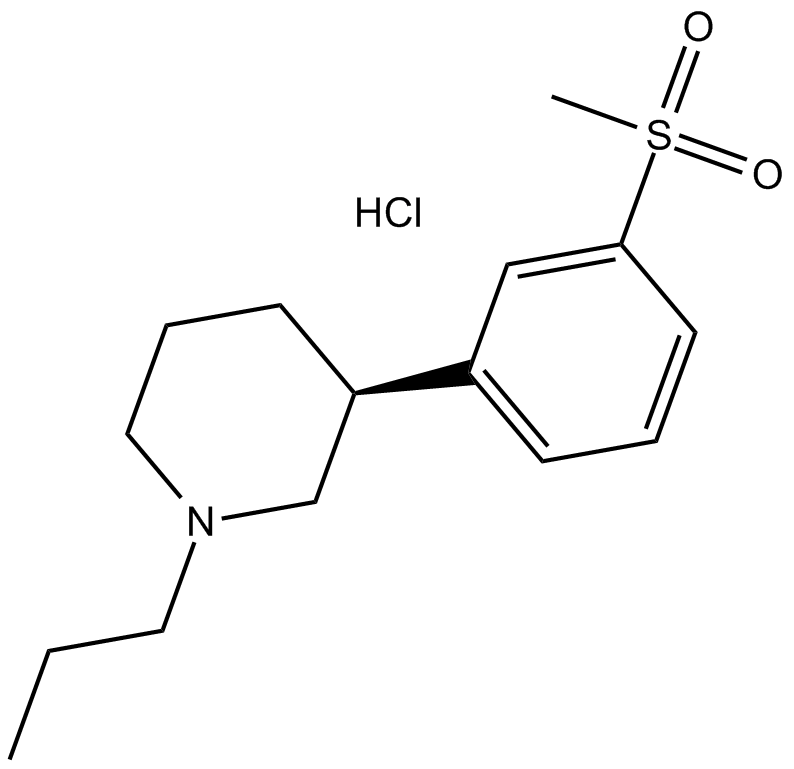 B7120 OSU 6162 hydrochlorideSummary: Dopamine stabilizer
B7120 OSU 6162 hydrochlorideSummary: Dopamine stabilizer -
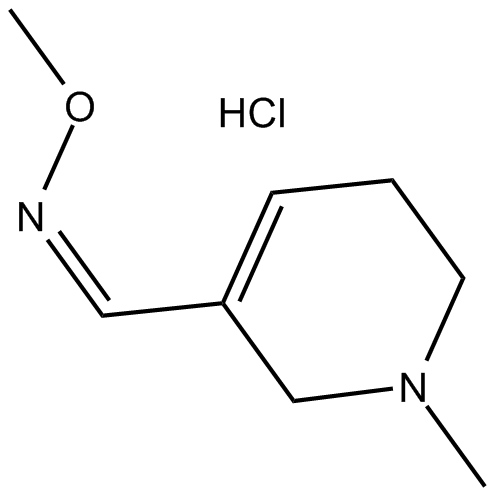 B7123 Milameline hydrochlorideSummary: Muscarinic receptor agonist
B7123 Milameline hydrochlorideSummary: Muscarinic receptor agonist -
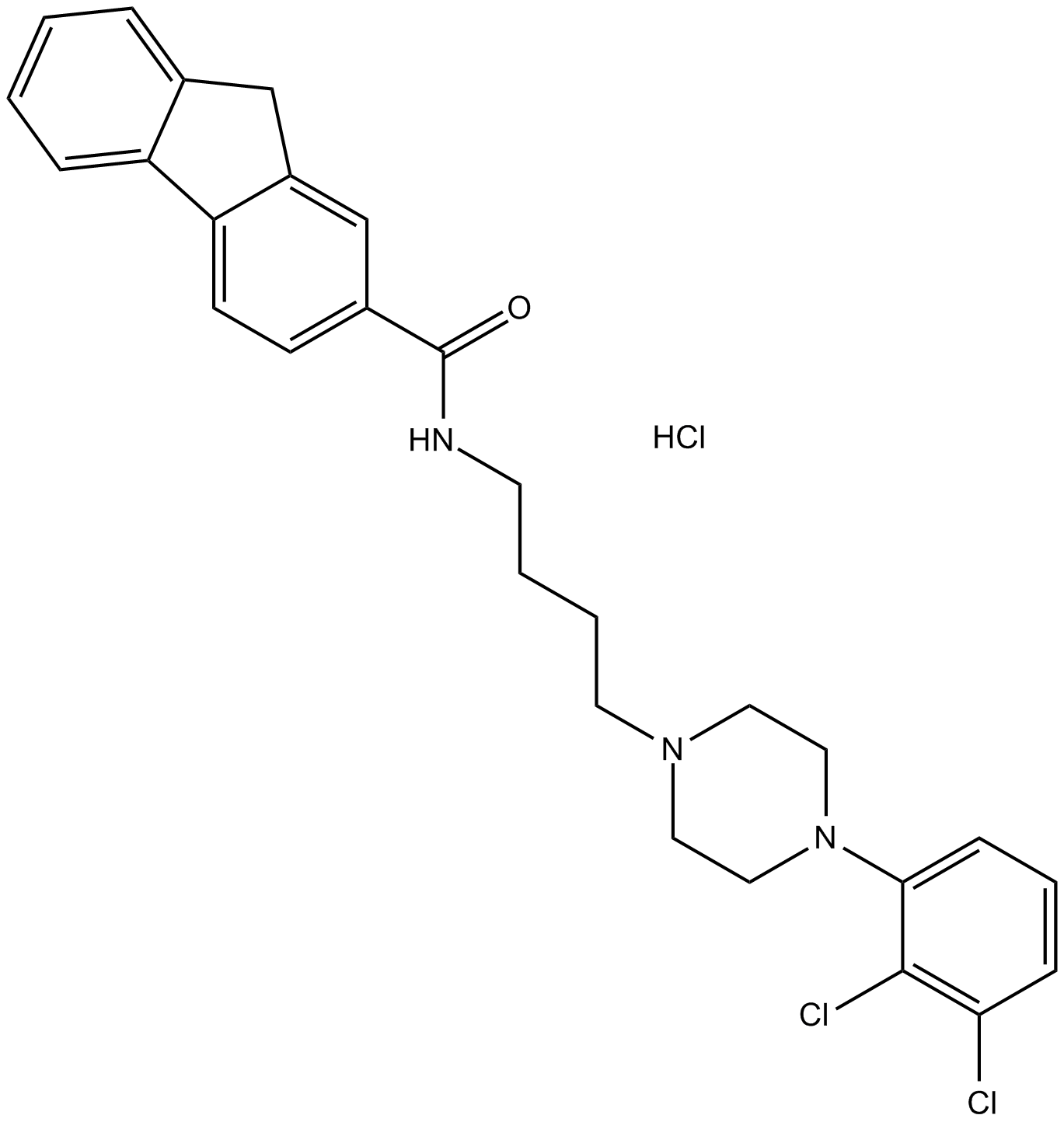 B7131 NGB 2904Summary: dopamine D3 receptor antagonist
B7131 NGB 2904Summary: dopamine D3 receptor antagonist -
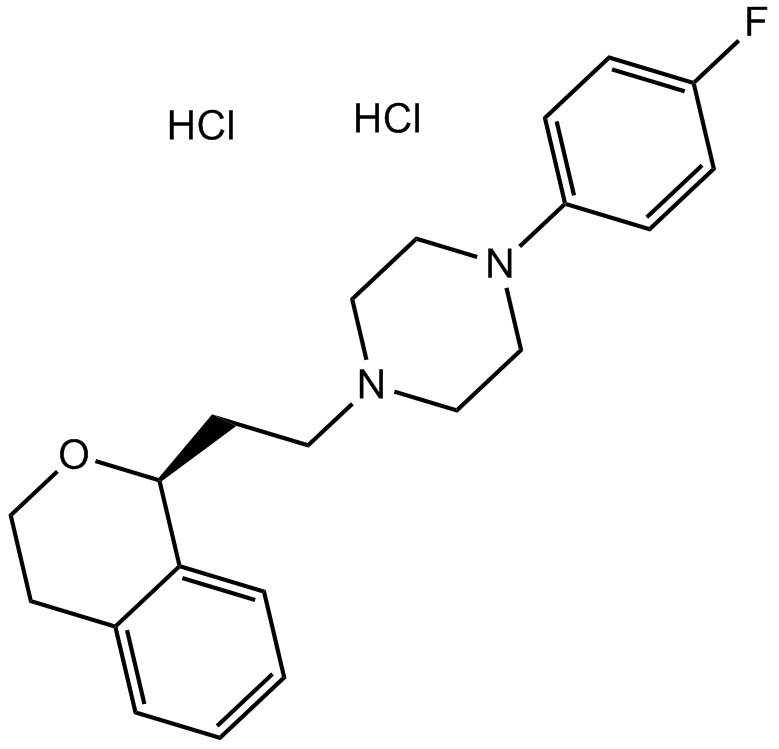 B7166 PNU 96415ESummary: dopamine D4 and serotonergic 5-HT2A receptor antagonist
B7166 PNU 96415ESummary: dopamine D4 and serotonergic 5-HT2A receptor antagonist -
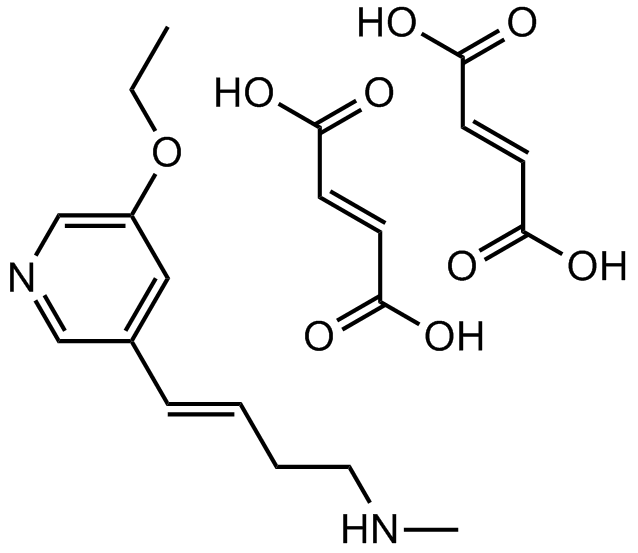 B7168 TC 2559 difumarateSummary: partial agonist of α4β2 nicotinic acetylcholine receptor
B7168 TC 2559 difumarateSummary: partial agonist of α4β2 nicotinic acetylcholine receptor

